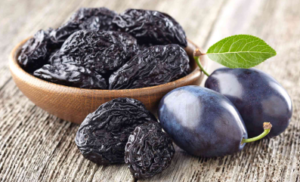Guinea pigs are adorable, social, and curious little creatures that bring joy to countless households. As responsible pet owners, it’s essential to ensure that our furry friends receive a balanced and nutritious diet. While guinea pigs thrive on a diet of hay, fresh vegetables, and specially formulated pellets, many owners wonder about incorporating fruits as occasional treats. One such fruit that often raises questions is prunes. Can guinea pigs eat prunes? The short answer is yes, but with significant caveats. This article dives deep into the topic, exploring the nutritional benefits, potential risks, and best practices for feeding prunes to your guinea pig.
What Are Prunes?

Prunes are dried plums, known for their sweet taste and chewy texture. They are packed with nutrients, including fiber, vitamins, and minerals, making them a popular snack for humans. However, what’s healthy for humans isn’t always suitable for guinea pigs. Understanding the nutritional profile of prunes is crucial before introducing them to your pet’s diet.
Nutritional Benefits of Prunes for Guinea Pigs
Prunes contain several nutrients that could theoretically benefit guinea pigs in small amounts:
- Vitamin C: Guinea pigs cannot produce their own vitamin C, making it essential to include it in their diet. Prunes contain a modest amount of vitamin C, which can contribute to your pet’s overall health.
- Fiber: Prunes are high in dietary fiber, which aids in digestion and helps prevent gastrointestinal issues in guinea pigs.
- Antioxidants: Prunes are rich in antioxidants, which can support the immune system and overall well-being.
While these benefits sound promising, it’s important to remember that prunes should only be an occasional treat, not a staple in your guinea pig’s diet.
You may love this one: Can Guinea Pigs Eat Eucalyptus Leaves?
Potential Risks of Feeding Prunes to Guinea Pigs
Despite their nutritional benefits, prunes come with several risks that make them less than ideal for guinea pigs:
- High Sugar Content: Prunes are naturally high in sugar, which can lead to obesity, diabetes, and dental problems in guinea pigs if consumed in excess.
- Acidity: The acidic nature of prunes can upset your guinea pig’s sensitive digestive system, potentially causing diarrhea or stomach discomfort.
- Choking Hazard: Prunes are sticky and chewy, which can pose a choking hazard, especially if not cut into small, manageable pieces.
- Calcium Content: Prunes contain calcium, which, in excess, can contribute to bladder stones—a common health issue in guinea pigs.
How to Safely Feed Prunes to Your Guinea Pig
If you decide to offer prunes to your guinea pig, follow these guidelines to minimize risks:
- Moderation is Key: Prunes should only be given as an occasional treat, no more than once a week. A small piece (about the size of a pea) is sufficient.
- Cut into Small Pieces: To prevent choking, cut the prune into tiny, bite-sized pieces.
- Monitor for Reactions: After feeding your guinea pig a small piece of prune, observe them closely for any signs of digestive upset, such as diarrhea or lethargy. If any adverse reactions occur, discontinue feeding prunes immediately.
- Balance with Other Foods: Ensure that prunes are only a small part of your guinea pig’s diet. The majority of their nutrition should come from hay, fresh vegetables, and high-quality pellets.
Healthier Alternatives to Prunes
If you’re looking for safer and healthier treats for your guinea pig, consider these alternatives:
- Fresh Fruits: Apples, strawberries, and blueberries are lower in sugar and acidity compared to prunes. Always remove seeds and cut fruits into small pieces.
- Leafy Greens: Vegetables like romaine lettuce, spinach, and kale are excellent sources of vitamins and minerals without the risks associated with sugary fruits.
- Herbs: Fresh herbs like parsley, cilantro, and basil can add variety to your guinea pig’s diet while providing essential nutrients.
Frequently Asked Questions (FAQs)
1. Can guinea pigs eat prune pits?
No, prune pits are a choking hazard and should never be given to guinea pigs. Always remove pits before offering any fruit.
2. Are dried prunes better than fresh plums for guinea pigs?
Neither is ideal due to their high sugar content. However, fresh plums are slightly better than dried prunes because they contain more water and are less concentrated in sugar.
3. How often can I give my guinea pig prunes?
Prunes should be given sparingly, no more than once a week, and in very small amounts.
4. What should I do if my guinea pig eats too many prunes?
If your guinea pig consumes too many prunes, monitor them closely for signs of digestive distress, such as diarrhea or bloating. Provide plenty of fresh water and hay to help regulate their digestion. If symptoms persist, consult a veterinarian.
Conclusion: Prunes as an Occasional Treat
While guinea pigs can technically eat prunes, they are not the best choice for a treat due to their high sugar content, acidity, and potential health risks. If you choose to offer prunes, do so sparingly and in tiny amounts. Always prioritize your guinea pig’s health by focusing on a balanced diet of hay, fresh vegetables, and high-quality pellets.
By understanding the nutritional needs and limitations of your guinea pig, you can ensure they live a happy, healthy, and fulfilling life. When in doubt, consult your veterinarian for personalized advice on your pet’s diet.
Drop your pet’s name here..
